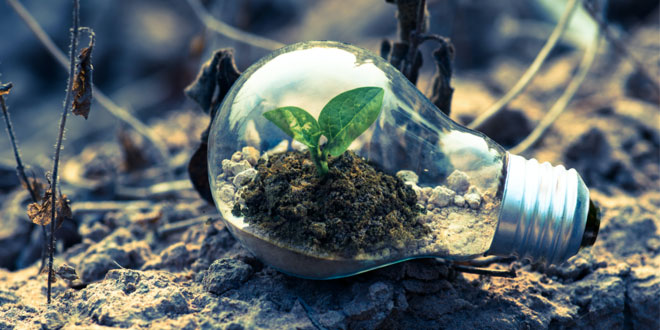
After pandemic restrictions meant we were limited to what we could buy and when, both consumers and producers learnt to adapt to how the world produces, distributes, purchases and consumes goods. Due to this, new trends are already emerging that cater to our altered way of life and are flourishing with their circular economy approach.
The pandemic has allowed us to see the massively positive impact we can all have on our environment in such a small space of time. Less commuting and ‘non-essential’ journeys has meant lower emissions, leading to improved air quality across the world. This, as well as changes to our daily whim-purchasing habits, are just two examples of how continued adoption to a more circular economy can improve the environment post pandemic.
A circular economy is when our resources are retained instead of disposed of, similar to nature, where life continues in a complete cycle. This is contrasting our current linear economy model of take, make and dispose, meaning we are far too comfortable with purchasing new day-to-day items rather than recycling or reusing old ones.
At the start of the pandemic, the fear of the unknown left households having to live to their means. With food shortages and panic buying, many ensured no food went to waste and every mouldy banana got used in never-ending loafs!
Before the pandemic, most of us couldn’t get through the month without some form of retail therapy. But, when this was taken away from us, we learnt to live to our means and realised we probably didn’t need those pairs of trousers and new top. For most, online shopping for clothes on apps such as Depop was the only option left to feed the urge.
This social shopping app has created a more modern, user friendly version of eBay and is especially popular with Gen Z. By targeting a younger audience and encouraging them to buy, sell and swap belongings online, it is encouraging a smaller consumer footprint as well as positively paving the way for younger generations, too.
Although retail shops are now open, it shouldn’t mean this popular way of buying should stop. As it is estimated that 10,000 items of clothing are being sent to landfill every five minutes, keeping this habit of reducing, reusing and recycling will go a long way in tackling our environmental impact, especially with fast-fashion.
As well as this, due to the cut down on our socialising and luxuries, for many, it has helped us to realise what is really important to us. We’ve all seen a world where our eyes have been opened to other possibilities and the importance of not taking loved ones for granted.
Whether that’s the freedom of working from home and not needing to jet across the world to have a good time. Ultimately, many have had to realise that life is in fact short, and we might not need to buy and own items to feel accomplished, we can rent them, enjoy them and give them back and still receive the same satisfaction.
For those hoping to incorporate circular economy principles into their lives or businesses, it’s worth taking a holistic approach to doing so. By this, it means that the environmental impact needs to be considered for a business’ entire supply chain to achieve sustainability. From procurement to sales, a plan needs to be put in place to ensure the implementation of low-carbon strategies.
This is especially important post-pandemic due to the public’s greater desire to shop and consume. Having a concrete plan of action on how staff can reduce waste will not only improve the environmental impact of the business, but will speed up delivery and in time, save money.
For those businesses who offer delivery or are travelling regularly, there are benefits in taking the time to optimise routes and utilise space. Ensuring shipping containers and trucks are properly filled can reduce the amount of trips needed to ship goods. This, as well as optimised routes, will both contribute to reducing overall emissions for businesses.
IKEA, the world’s largest international furniture and home furnishings retailer needs no real introduction, everyone knows the Swedish company is the place to go for cheap but cheerful flatpack furniture. However, IKEA are very conscious of their environmental impact and are constantly finding new ways to contribute to a healthier planet and a circular economy.
This is evident in the launch of their BuyBack scheme, which gives old furniture a new lease of life. With BuyBack, IKEA helps to prolong the life of their furniture by buying back used items and in return, giving a refund card. The furniture is then sold second-hand, giving others an affordable chance to enjoy the furniture.
The scheme is on hold right now due to the pandemic but as DIY and home improvements have become a craze due to lockdown, it’s so important to make sure furniture is not thrown away into landfill, there are other options available.
Similarly, the fashion giant, H&M Group, has signed and committed to a new pledge of accelerating the transition to a circular economy. By joining the Ellen MacArthur Foundation, it means the group will now be taking a new approach to how their clothing is designed, produced and used. This change will see the stores offering garment collecting options as well as ensuring their clothes are made from safe and renewable materials.